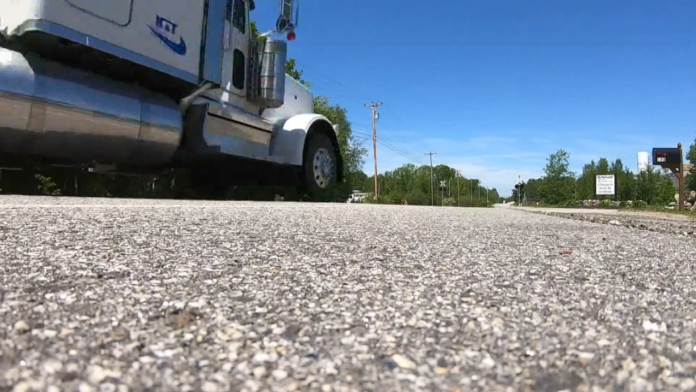More than 230 crashes involving semi trucks have already been recorded in Maine in 2021 alone, but state and city officials know that the truckers are not to blame – and that’s where the state’s most recent safe driving campaign comes in.
Although 230 of this year’s crashes have involved commercial trucks, officials and industry experts say that the motorists are typically the parties responsible for the unfortunate incidents.
“What we’re finding is people get too comfortable around large commercial vehicles,” said Scott Clark of Savage Safe Handling, who teaches truckers defensive driving.
“What they don’t realize is the effect it has on those vehicles when they do something unfavorable, like take away stopping distance or cut them off, things of that nature,” he continued.
Clark says that truckers are often forced into making tough driving decisions because of the ignorance and poor choices of the motorists around them.
#WATCH: Crashes, cut-offs, and close calls!🚚Here are some videos Maine State Police shared with me, taken from commercial truck dashcams. Tonight at 6 on @newscentermaine, truck drivers urge others on the road to give them space. pic.twitter.com/jwSMwEGiel
— Hannah Dineen (@hannah_dineen) June 7, 2021
“When our drivers lose their stopping distance, they have a decision to make really quickly. Do they go off the road and potentially harm their vehicle and/or get injure themselves, or did they hit the vehicle in front of them and possibly injure or even kill that driver? So our drivers have split seconds to make major decisions.”
In fact, in Maine alone, at least 57% of crashes involving a commercial vehicle can be attributed, at least in part, to the actions of the motorist involved in the wreck. According to Maine State Police, that’s a higher motorist-at-fault percentage than in most states.
“The percentage of passenger cars having a negative effect on a commercial vehicle is higher [in Maine] statistically than in other places,” Lt. Hayden said.
“People have a lot more distractions in a vehicle I think. There’s more cars on the road today, I also believe that there’s a lot of people that are growing up where they’re not around big trucks and buses and things like that anymore, and they really don’t understand the stopping distances and the views that the drivers have. The drivers have a very very tough job.”
As a reminder: a typical car going 65 mph needs approximately 300 feet to come to a complete stop; a fully loaded big rig going 65 mph needs about twice that, 600 feet, to stop. Clark says that, if four-wheelers could just keep this fact in mind next time they head out onto the road, everyone would be just a little bit safer.
“We just need people not to hover around large vehicles commercial motor vehicles. Try to get beyond them, either in front of them or behind them.”
